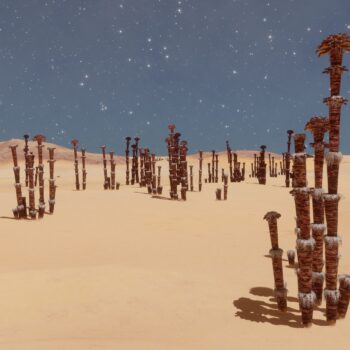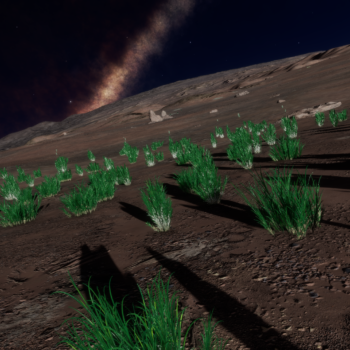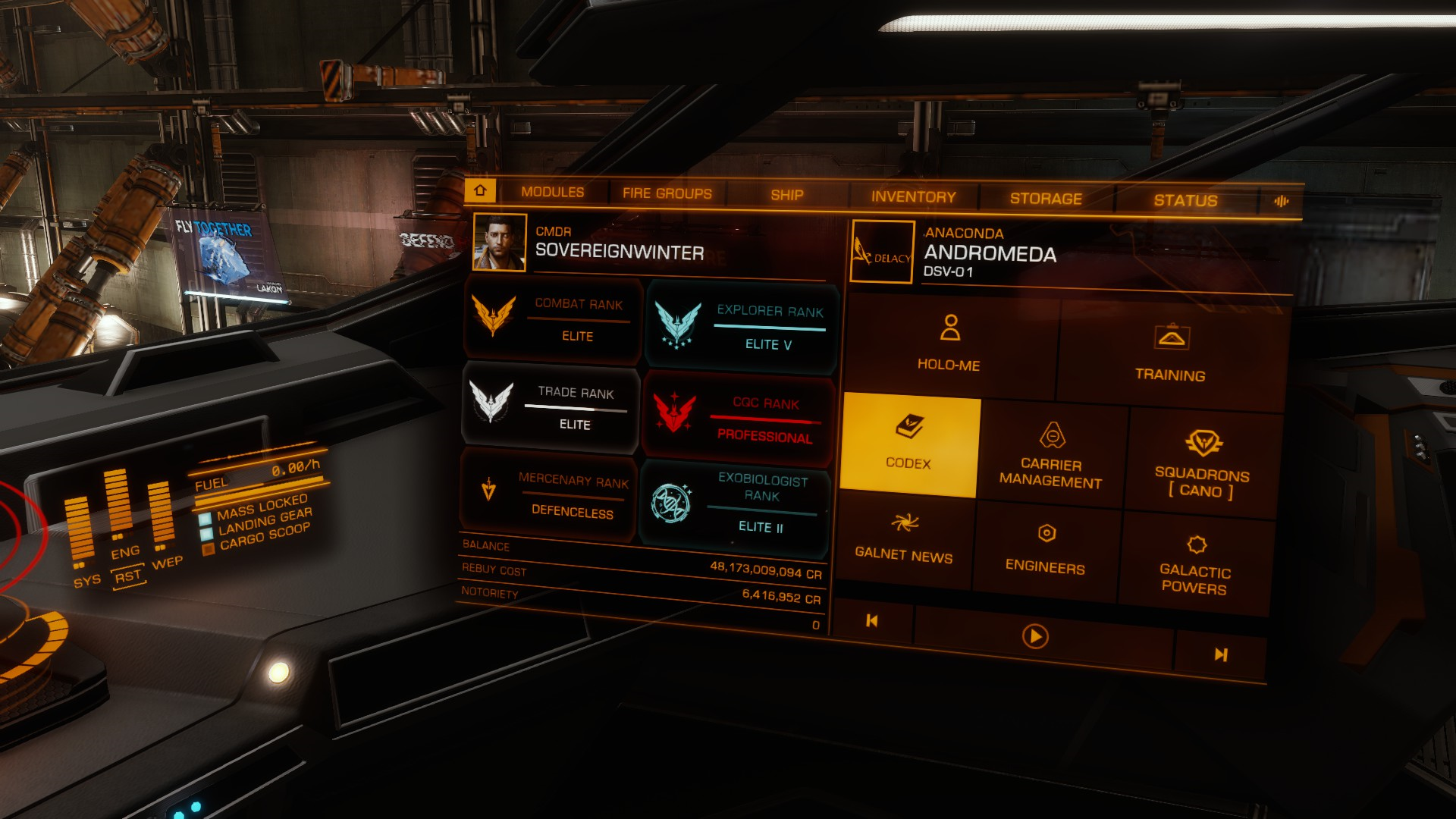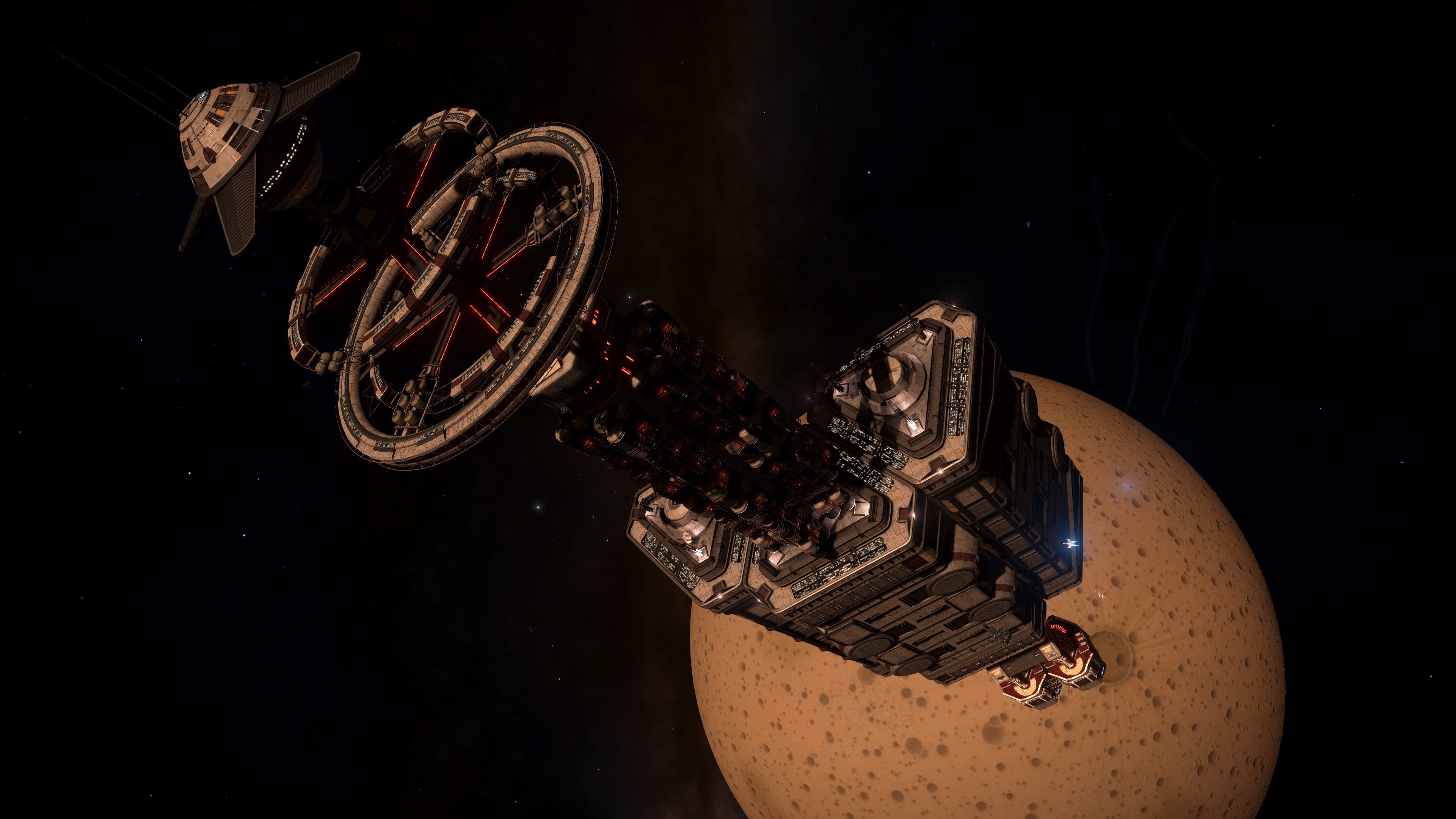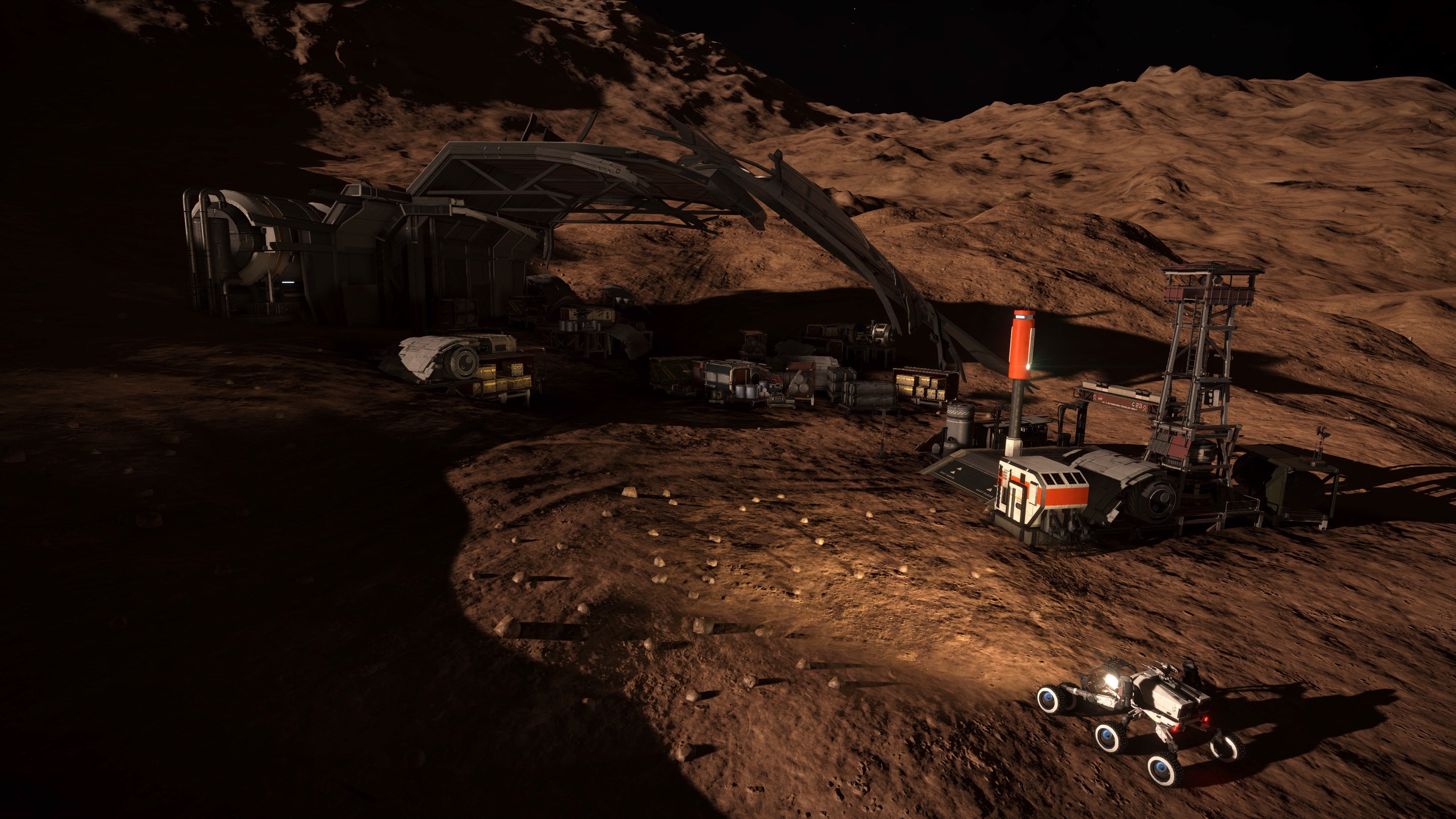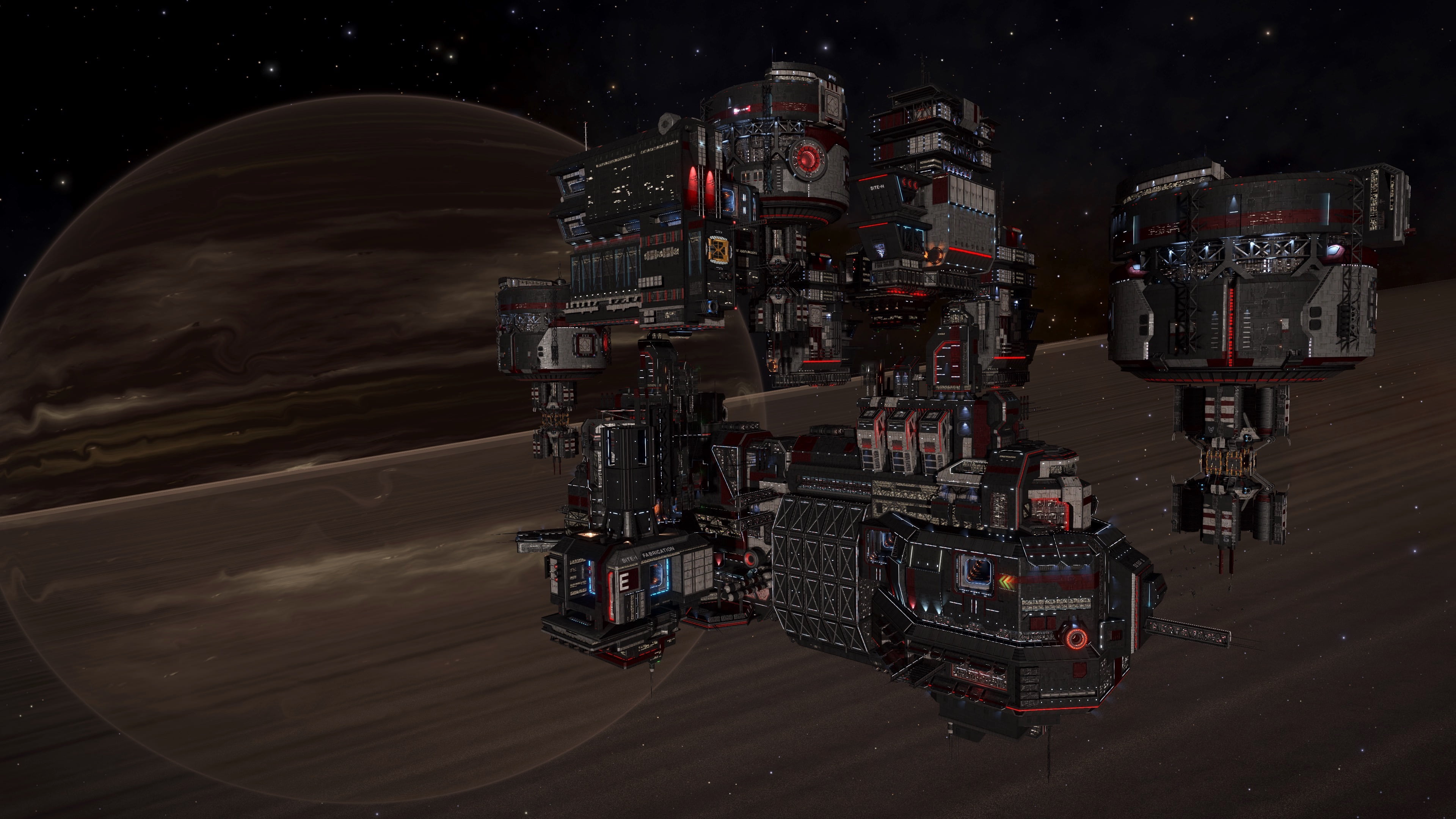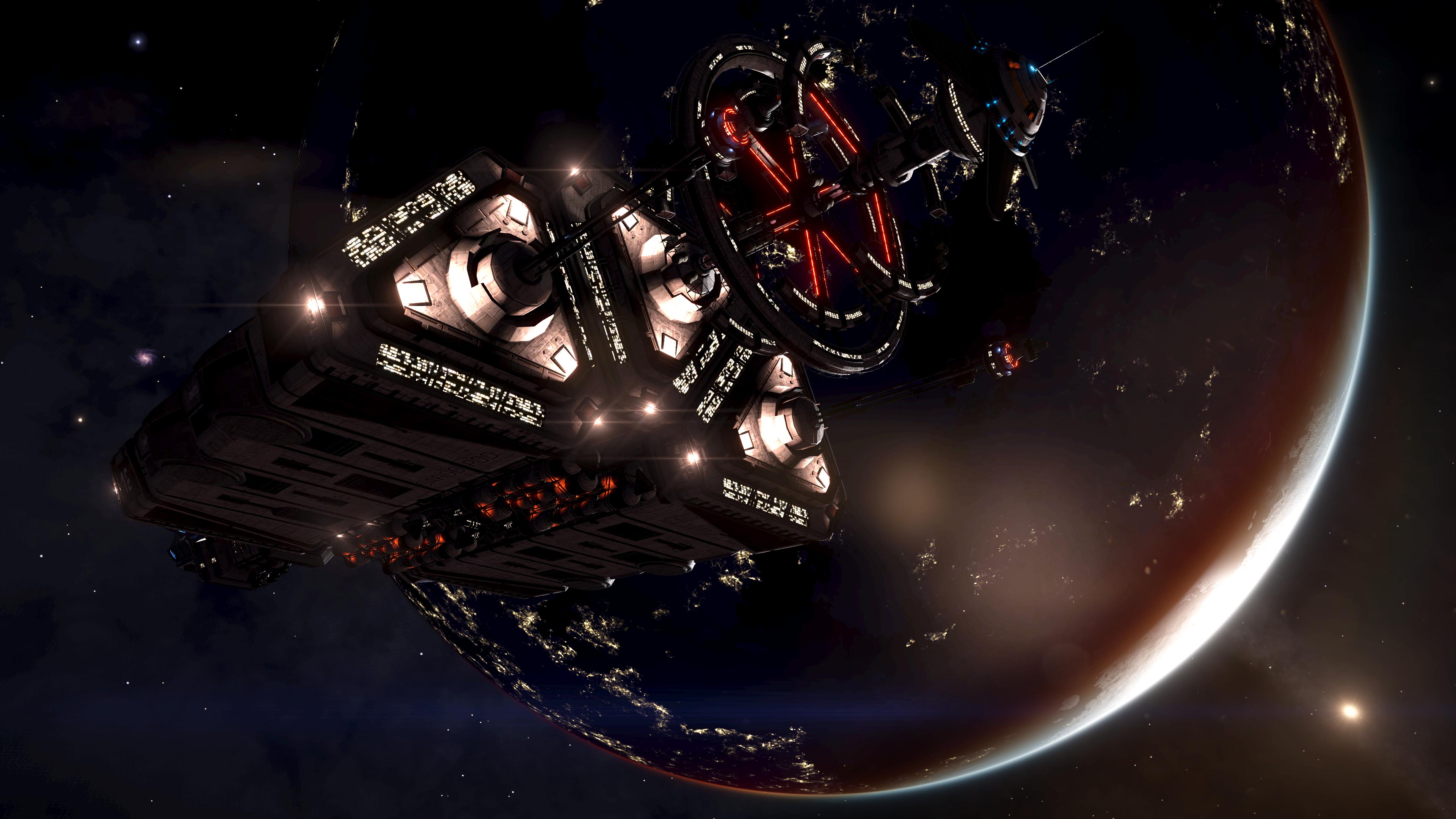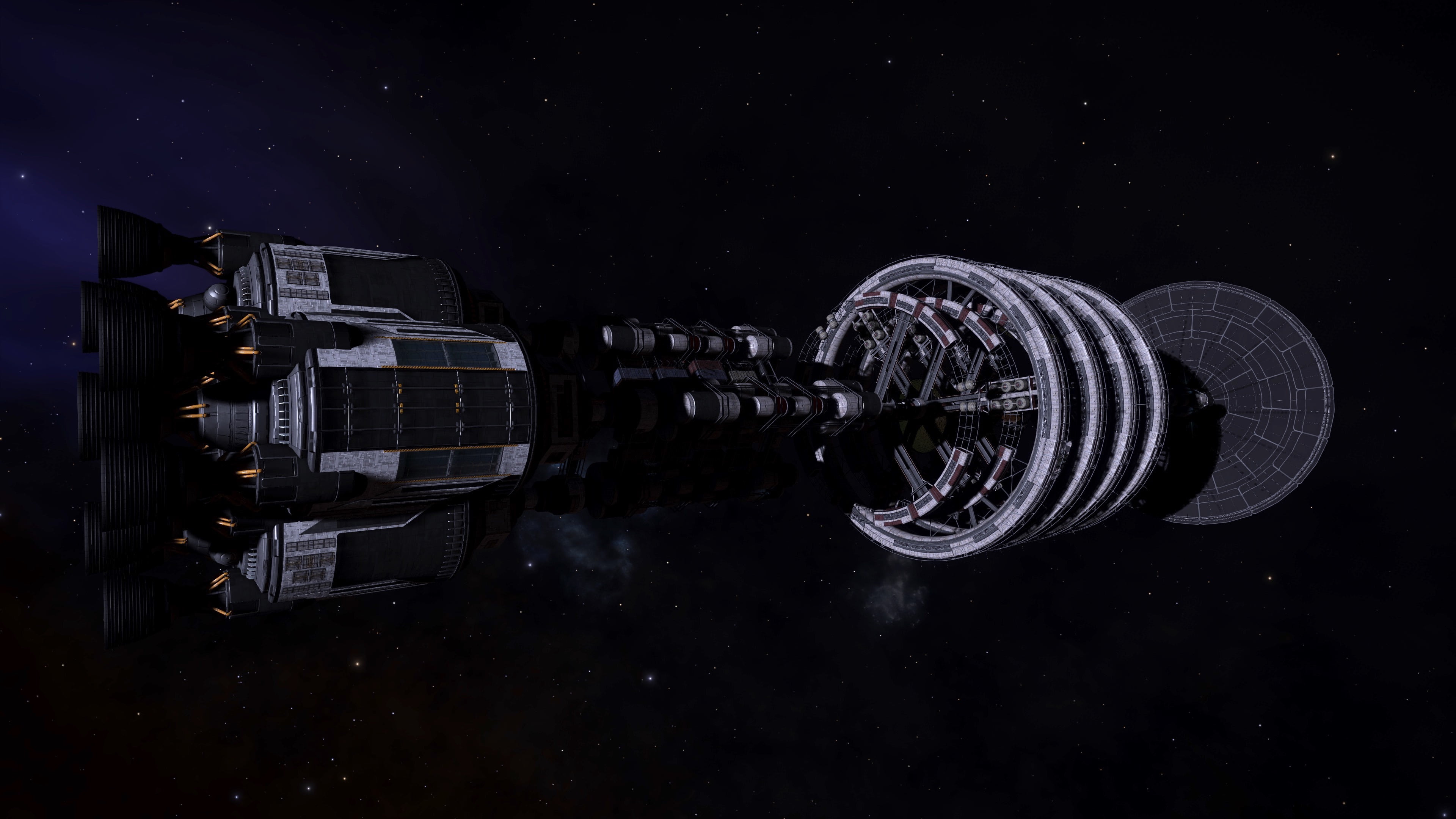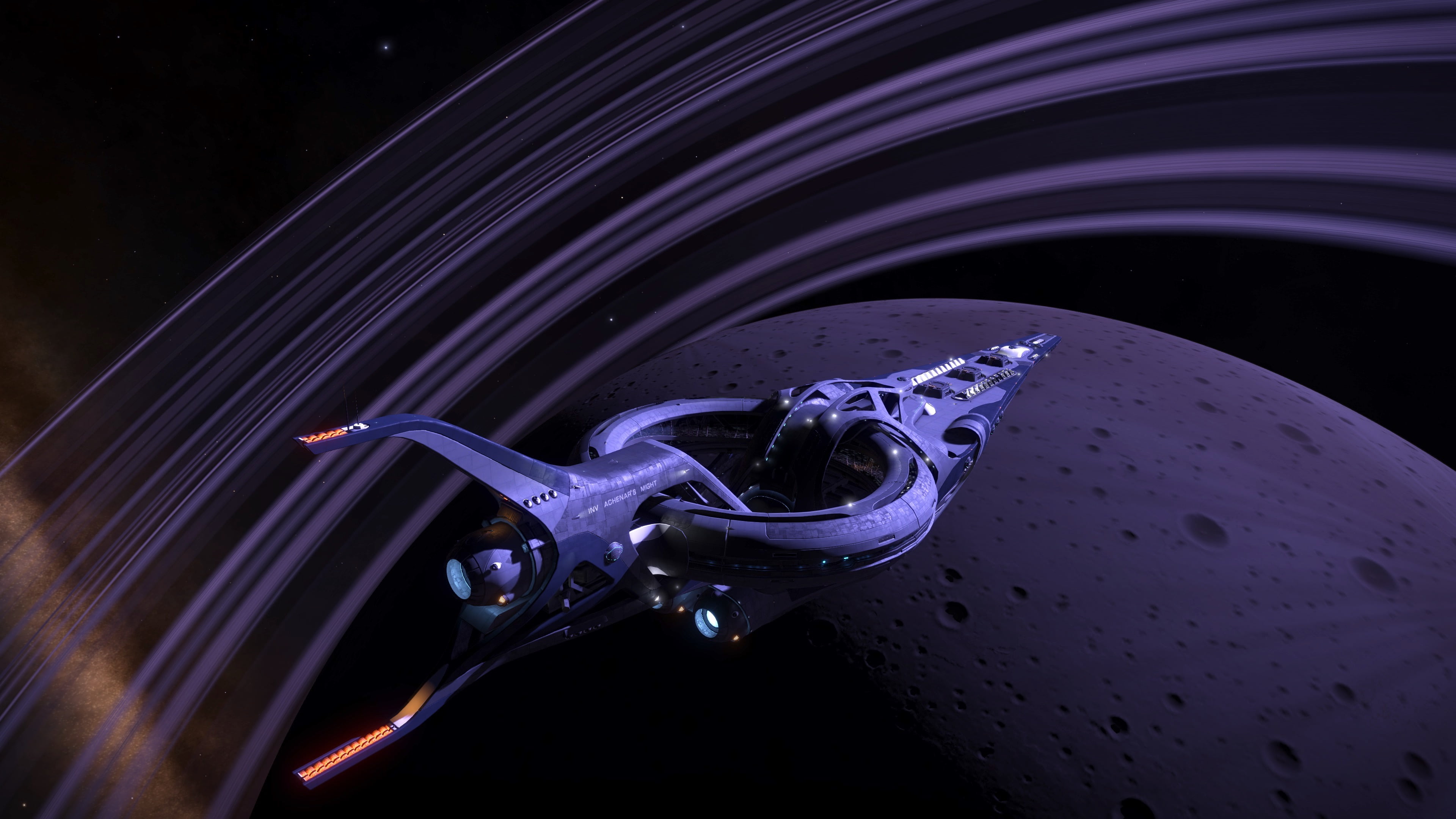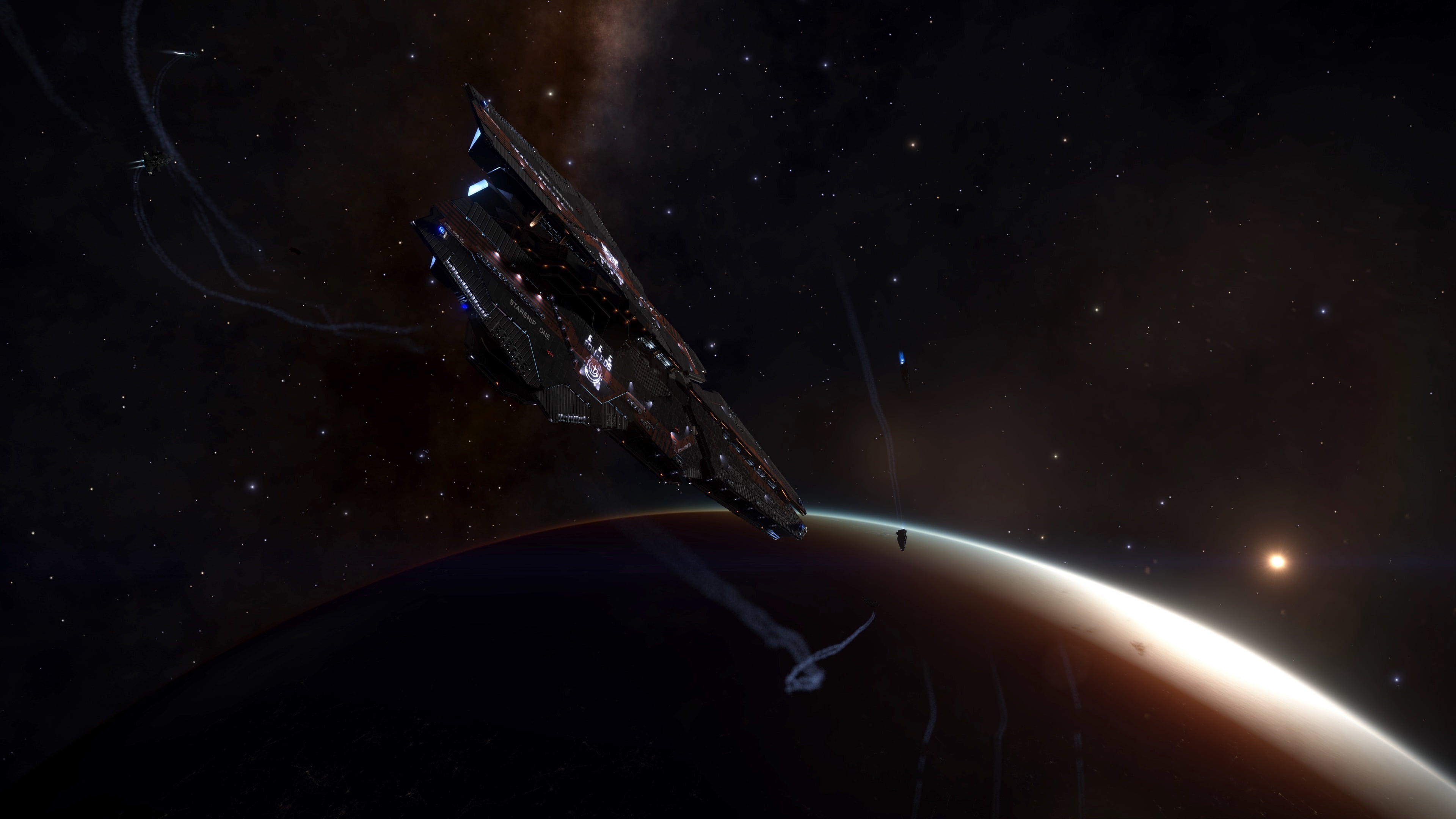Raspberry Sponge Fingers. Fungoida Stabitis – Magenta. Image courtesy of Cmdr. Salega Garnessa
Organisms that live deep inside a planetary substrate. They share similar morphology to fungi but are not saprophytic, instead their mycelial body drives its metabolism through chemosynthetic and thermosynthetic processes. These are facilitated by the substrate which also protects the organism from environmental extremes. The exposed aspects of the organisms are primarily involved in reproduction. This is frequently through spore ejection, but certain Species also support gaseous exchange with the atmosphere. Some Fungoida exhibit bioluminescent behaviours as part of a metabolic process involved in the breakdown of accumulated toxins.
Fungoida frequently exhibit a preference for mountainous areas of a planetary body, on plateaued spaces within mountain ranges or on the mountain sides and peaks themselves, presenting Commanders with interesting challenges to landing in close proximity.
Variant Determinant: Material
Minimum Colonial Separation: 300m
Species
| Species Name | Percentage of recorded Fungoida Population | Vista Genomics Offer Price as at 31st March 3310 |
|---|---|---|
| Fungoida Bullarum | 8.75% | 3,703,200 |
| Fungoida Gelata | 22.72% | 3,330,300 |
| Fungoida Setisis | 50.62% | 1,670,100 |
| Fungoida Stabitis | 17.91% | 2,680,300 |
All data as at 30th June 3310.
For up-to-date statistics and Vista Genomics pricing, please visit:
Fungoida Bullarum
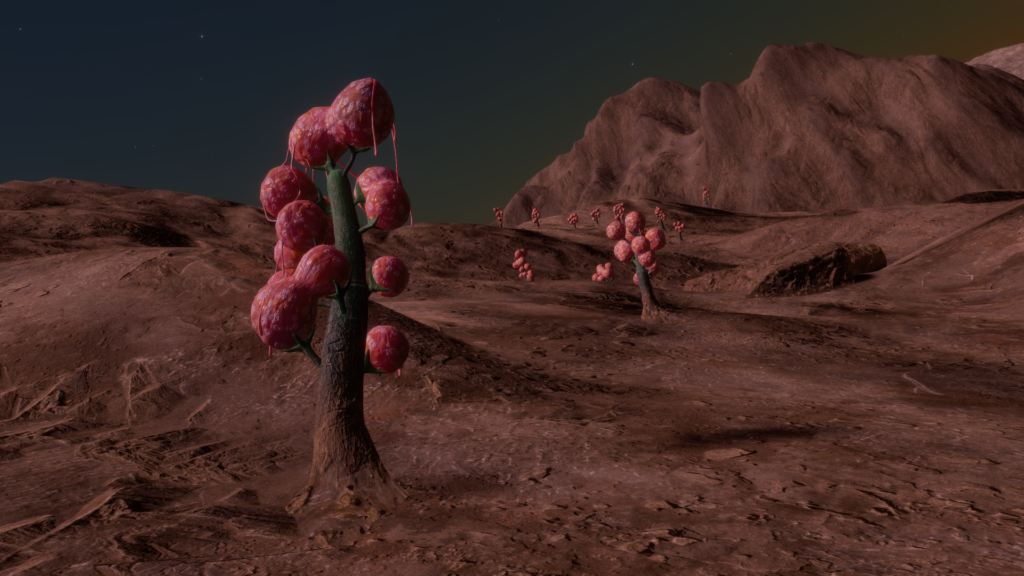
A Fungoida that features clusters of mottled bubble-shaped growths atop a central stalk. These contain spores that can be exposed to the winds to facilitate distribution.
Material and Variant
| Material | Antimony | Polonium | Ruthenium | Technetium | Tellurium | Yttrium |
| Variant | Red | Mulberry | Magenta | Peach | Gold | Orange |
Planetary Body Type: Rocky Ice (99%) or Rocky (1%)
Atmosphere: Argon (97%), Nitrogen (3%)
Volcanism: No Volcanism
Temperature Pressure Gravity
| Minimum | Average | Mode | Maximum | |
| Temperature (K) | 50.01 | 81.12 | 71.00 | 131.74 |
| Pressure (atm) | 0.000988699 | 0.011759682 | 0.016304752 | 0.098171156 |
| Gravity (G) | 0.06 | 0.24 | 0.27 | 0.28 |
Galactic Arm Preference: No Preference
Fungoida Gelata

This Fungoida Species resembles an upturned jellyfish, emerging from a solid base buried within the substrate. The exposed part is dominated by fleshy reproductive organisms that shed organic tissue. This tissue can float on the light breeze and form a new organism if it lands in the right location.
Material and Variant
| Material | Cadmium | Mercury | Molybdenum | Niobium | Tin | Tungsten |
| Variant | Cyan | Lime | Mulberry | Green | Red | Orange |
Planetary Body Type: High Metal Content (10%) or Rocky (90%)
Atmosphere: Carbon Dioxide (74%), Water (26%)
Volcanism: Insignificant
Temperature Pressure Gravity
| Minimum | Average | Mode | Maximum | |
| Temperature (K) | 79.45 | 246.48 | 181.00 | 452.01 |
| Pressure (atm) | 0.002665247 | 0.066900274 | 0.038977178 | 0.098690014 |
| Gravity (G) | 0.04 | 0.14 | 0.05 | 0.27 |
Galactic Arm Preference: No Preference
Fungoida Setisis

This Fungoida Species produces vertical clusters interspersed with spore pods atop thin stalks. allowing them to break off and scatter to reproduce elsewhere.
Material and Variant
| Material | Antimony | Polonium | Ruthenium | Technetium | Tellurium | Yttrium |
| Variant | Peach | White | Gold | Lime | Yellow | Orange |
Planetary Body Type: High Metal Content (31%), Rocky (68%) or Rocky Ice (1%)
Atmosphere: Ammonia (96%), Methane (4%)
Volcanism: Insignificant
Temperature Pressure Gravity
| Minimum | Average | Mode | Maximum | |
| Temperature (K) | 67.37 | 161.96 | 168.00 | 187.16 |
| Pressure (atm) | 0.000986945 | 0.003010909 | 0.000987126 | 0.098422128 |
| Gravity (G) | 0.03 | 0.17 | 0.14 | 0.28 |
Galactic Arm Preference: No Preference
Fungoida Stabitis
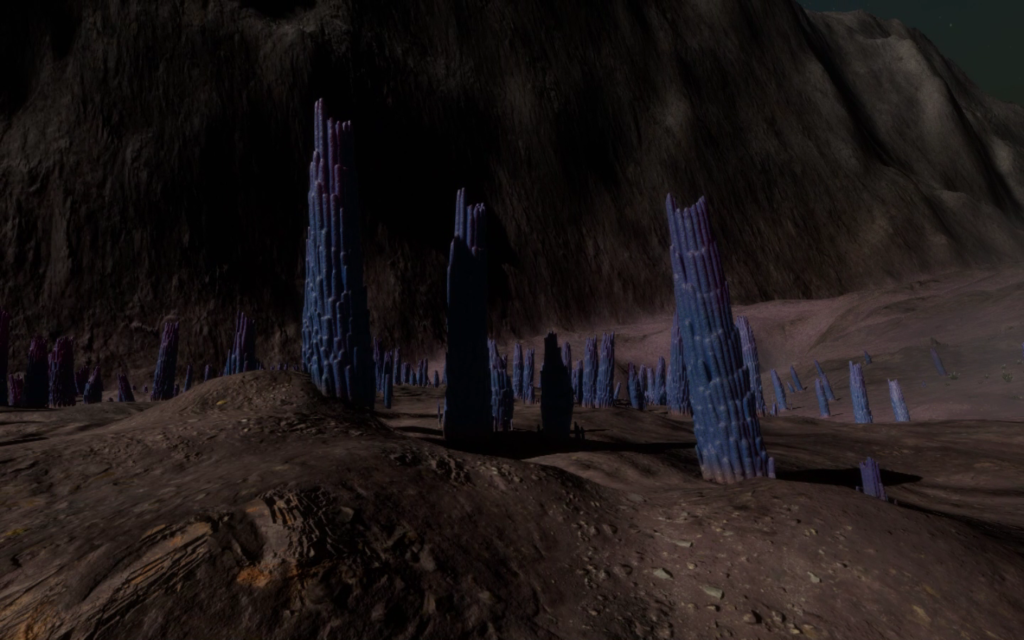
This Fungoida Species produces vertical clusters interspersed with spore pods atop thin stalks. allowing them to break off and scatter to reproduce elsewhere.
Material and Variant
| Material | Cadmium | Mercury | Molybdenum | Niobium | Tin | Tungsten |
| Variant | Blue | Green | Magenta | Orange | Peach | White |
Planetary Body Type: High Metal Content (11%), Rocky (89%)
Atmosphere: Carbon Dioxide (80%), Water (20%)
Volcanism: Insignificant
Temperature Pressure Gravity
| Minimum | Average | Mode | Maximum | |
| Temperature (K) | 78.79 | 233.38 | 181.00 | 451.61 |
| Pressure (atm) | 0.001215788 | 0.065481830 | 0.040219443 | 0.098685378 |
| Gravity (G) | 0.04 | 0.15 | 0.05 | 0.27 |
Galactic Arm Preference: Orion-Cygnus Arm including Odin’s Hold and Galactic Centre
